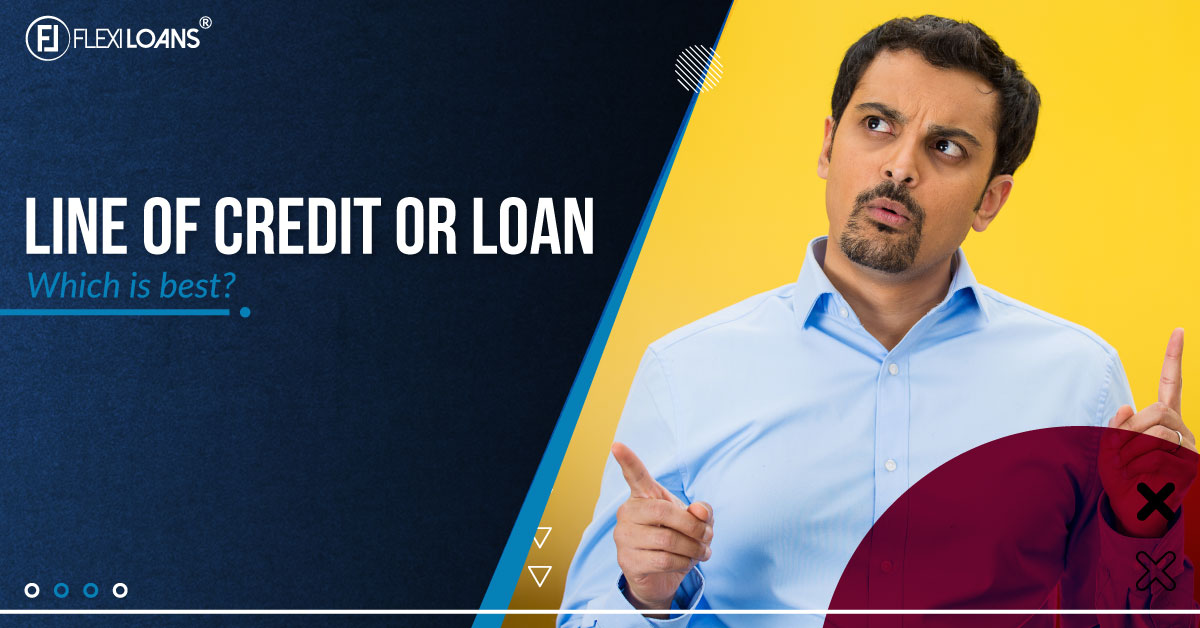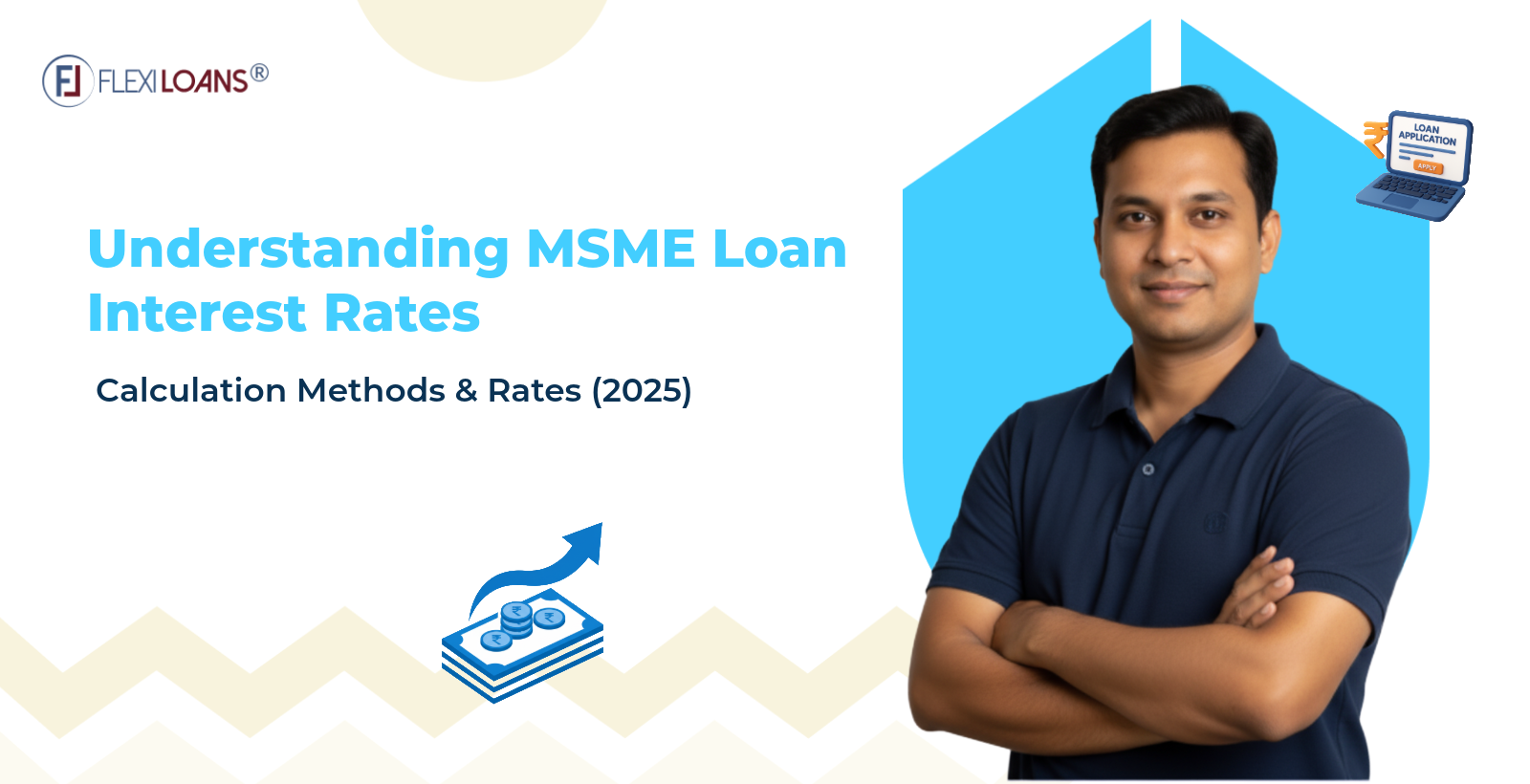Jan 14, 2022
Mar 01, 2022

Individuals and businesses can borrow money in the form of a loan or line of credit. Both are methods to raise capital in debt but differ from each other. Capital needs to keep rising from time to time, but the purpose of the funds’ requirement will determine the suitable route to be chosen.
Understanding The Basic Difference
A loan is a one-off cost, but a line of credit is a revolving account. The loans people speak about are generally instalment loans wherein a borrower applies for an amount, receives it, and pays it back in regular instalments until the principal and interest payments are settled. Contrary to a loan, a borrower can borrow and pay it off for as long as the line of credit remains active. Think of credit cards, for instance.
What Is A Loan?
A loan is a defined amount of debt borrowed which needs to be paid back within a stipulated time frame. This one-time feature of a loan is known as a non-revolving credit limit. Once repaid, the loan gets closed, and to borrow more money, you need to raise a new loan. How much you can borrow will depend on your capital needs and creditworthiness.
Loans are broadly classified as secured and unsecured.
Secured loans are the ones that are secured by some collateral. It is, in most cases, the same asset for which the loan was sanctioned. For instance, a home loan is secured by the home. If the borrower fails to repay the loan, then the lender has the right to sell the house and use the proceeds to recover the remainder of the loan amount.
Unsecured loans are the ones that are not secured by some asset. Given the lack of collateral, these solely use the debtor’s creditworthiness. These are advanced for lower amounts but at a higher rate of interest.
What Is A Line Of Credit Loan?
Line of credit loans differs from a loan because they have a revolving credit limit. In these, the debtor has approved a predefined credit limit that can be utilised repeatedly, partially, or in full. These are useful for individuals and businesses who have unpredictable payments to make.
A credit card is a classic example to understand what a line of credit is. A credit card lets you borrow money up to a limit, which has to be repaid within a defined time limit. It is a unique line of credit because no interest is charged if the borrowed amount is settled within the time provided. Other lines of credit may not offer a grace period like so. They may have an interest component that applies from the day the loan was initiated, like installment loans.
Line of credit loans vary as follows:
Security
- Secured Line of Credit: This type of Line of Credit requires collateral.
- Unsecured Line of Credit: This type of Line of Credit is not secured on any asset.
Facility
- Personal Line of Credit: For personal use like home equity line of credit loans.
- Business Line of Credit: For business needs, like bank overdrafts.
All lines of credit come with a minimum monthly payment. Common examples include home equity lines of credit and business lines of credit.
It is easy to apply for a line of credit loan. Reach out to your bank or financial institution along with the documents required, and they will take it forward.
What Is A Business Line Of Credit?
Businesses can opt for a business line of credit to address various capital needs. These are far more flexible vis-à-vis loans as these are revolving accounts.
This is a short-term borrowing tool, and unlike loans, there is no monthly repayment cycle. The borrower can borrow up to the sanctioned credit limit, subject to annual renewal. The interest is payable only to the amount borrowed and not approved. This form of borrowing is subject to credit review.
Business Loans
Small business loans or commercial loans are for urgent requirements in a business. These can be unsecured or secured.
If you are looking for an immediate requirement of funds, then you can opt for an unsecured small business loan if you want a business loan without collateral. The most significant advantage of small business loans is that they get faster approvals from lenders.
Unsecured business loan interest rates are slightly higher than those on secured business loans. This is so because it is riskier for the lender because of the lack of collateral.
How To Get A Loan Without Collateral
- Check whether you fulfil the lender’s criteria to ensure your eligibility.
- Get in touch with your preferred bank or financial institution. This can be done in person or online.
- Submit required documentation. Unsecured business loans are hassle-free as they require minimal paperwork.
Line Of Credit Vs Loan
Borrowing needs do not follow one-glove-fits-all psychology. To conclude, which one is right for you depends on the financial goal and whether it is for a personal market or to finance a business opportunity.
- If you have a defined end goal, say to finance debt, buy a car or a house, then taking a loan will fulfil your funding requirement. For recurring cash needs, a line of credit is more suited, for instance, a credit card.
- The interest rate is fixed for instalment loans. A line of credit generally has a variable rate of interest. If you have a one-time expense, taking a line of credit loan does not make sense.
- Payments can be made monthly, semi-annually, or annually depending on the type of loan you have taken. A line of credit also attracts monthly repayments.
- For business needs, a business loan will have a fixed lump-sum amount. However, a business line of credit allows you the flexibility to borrow as per your choice. There is a set credit limit, and a borrower can borrow up to that figure.
- Credit score plays a crucial role when you want to get hold of the line of credit. While creditworthiness is reviewed each year in the case of a business line of credit, for any unsecured form of debt, the lender will be keen on the same. The amount sanctioned may also depend on your credit score.
- While interest accrues immediately on installment loans, but only on credit lines when funds are drawn.
- Less paperwork is required for unsecured lines of credit but maybe slightly cumbersome for personal loans.
Difference Between A Loan And A Line Of Credit
To help you choose which method of debt financing to choose, the following is a table of comparisons that chalks out the critical features of both:
| LOAN | LINE OF CREDIT | |
| TYPE OF CREDIT | Non-revolving account | Revolving account |
| TYPE OF INTEREST | Fixed | Variable |
| RATE OF INTEREST | Interest rates start as low as 2.5% for personal loans and can go as high as 7.5% for car loans | Range from 4.27% to 8.04% |
| TYPE OF DEBT | Secured and unsecured | Secured and unsecured |
| FEES | May include origination fees, application fees, late fees and/or prepayment penalties | Annual fixed charges, late fees and overdraft fees |
| TERM OF THE DEBT | Short, medium and long-term | Ongoing; repay and draw again |
| REPAYMENT | Monthly | Monthly |
| FUNDING METHOD | Single- time lump sum amount | Flexibility to draw up to the credit limit until draw period ends |
| SUITABLE FOR | Individuals and businesses | Individuals and businesses |
Additionally, the credit score to acquire a line of credit is also more than that for an instalment loan. Both loan limits are on similar lines, but a few lines of credit loans may offer a higher credit limit.
Pros And Cons Of Loans:
| PROS | CONS |
| Fixed loan amount and payment cycle for the entire term of the loan | You are obligated to loan the full amount even when you do not need all of it |
| Lower credit scores | Interest is to paid on the full amount |
| A lot of banks offering a variety of products | Fees and charges can be between 1% – 8% |
Pros And Cons Of Line Of Credit:
| PROS | CONS |
| Gives the borrower the flexibility to choose as per capital requirement | Higher credit score |
| Flexible repayment routes | May attract annual or monthly maintenance fees |
| Interest payment is made only on the amount drawn | Interest rates may fluctuate |
The better method of the two will always depend on your end goal. If your end goal is predetermined and is a single-time cost, a loan seems to be a better option. However, for recurring expenses, especially for businesses aiming to expand their business, they can consider taking a line of credit.







